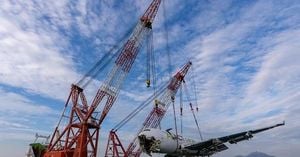On October 25, 2025, a complex contradiction surfaced at the heart of U.S. policy in the Amazon: the Trump administration’s efforts to crack down on drug trafficking now appear to be at odds with its own cuts to aid programs designed to fight coca cultivation at its source. This paradox has sent ripples through both diplomatic circles and the communities most affected by the cocaine trade, raising urgent questions about the best path forward in the decades-long struggle against narcotics production in South America.
According to NPR, the Trump administration has doubled down on its commitment to combat international drug trafficking. The White House has repeatedly stated that stopping the flow of illegal drugs into the United States remains a top priority. However, this hardline stance has come alongside significant reductions in funding for foreign aid programs that target coca—the plant from which cocaine is derived—at its very roots, deep within the Amazon basin.
These aid programs, many of which have operated for years in partnership with local governments and communities, focus on providing alternative livelihoods to coca farmers and supporting sustainable agriculture. The logic is straightforward: if farmers have access to profitable, legal crops and markets, the incentive to grow coca diminishes. Yet, as funding dries up, these alternatives are becoming scarcer, leaving many rural families in a bind.
“It’s a classic case of working at cross purposes,” said one international development expert, speaking to NPR on condition of anonymity. “If you want to stop cocaine at the border, you have to stop coca in the field. But if you take away the resources that help farmers switch to something else, what do you expect them to do?”
The contradiction has become especially visible in Peru, where the so-called “forgotten cocaine war” continues to rage in the shadow of more headline-grabbing crises. In remote Amazonian valleys, U.S.-backed aid organizations have long worked with local farmers to replace coca fields with coffee, cacao, and other legal crops. These efforts have seen some success, but progress is fragile—and now, with U.S. aid cuts, many fear it could unravel.
“The Trump administration's goals to crack down on drug trafficking may be at odds with cuts to aid programs meant to fight coca at its source in the Amazon,” NPR reported, encapsulating the dilemma faced by both policymakers and the people on the ground. This tension is not just theoretical; it’s playing out in real time as budgets shrink and support networks falter.
At the heart of the debate is a fundamental question: can the United States effectively fight drugs abroad without investing in the social and economic infrastructure that underpins coca eradication? History suggests the answer is complicated. In the past, aggressive interdiction efforts—such as military raids and aerial spraying—have yielded only temporary reductions in coca cultivation. Without viable alternatives, farmers often return to coca, driven by poverty and the promise of steady income.
“We’ve seen this movie before,” said a former aid worker who spent years in the Amazon. “When the money for alternatives disappears, coca comes back. It’s that simple.”
For many in the affected regions, the stakes are high. Coca cultivation is not just an economic issue; it’s also a matter of security and stability. The illicit trade fuels violence, corruption, and environmental destruction. But for small farmers with few options, it can also be the only way to put food on the table.
The Trump administration’s approach has drawn criticism from both sides of the political spectrum. Some argue that a tough-on-crime posture is necessary to stem the tide of drugs entering the U.S., while others insist that slashing aid only undermines the broader goal of reducing supply. The debate is further complicated by shifting alliances in Congress and an ever-evolving geopolitical landscape.
Despite the controversy, officials in Washington have defended the cuts, citing budget constraints and the need to prioritize domestic concerns. “We are committed to fighting the drug trade, but we have to make tough choices,” said a senior administration official, as quoted by NPR. “Our resources are not unlimited.”
Yet, critics warn that these “tough choices” may ultimately prove self-defeating. Without sustained investment in alternative development, they argue, the cycle of coca cultivation and cocaine trafficking will continue unabated. The result could be a Pyrrhic victory: short-term gains at the border, but long-term setbacks in the field.
On the ground in Peru and other parts of the Amazon, the impact of U.S. policy is already being felt. Aid workers report that projects to introduce new crops and train farmers are being scaled back or shuttered entirely. Community leaders worry that the loss of support will push vulnerable families back into the arms of drug traffickers.
“We’re seeing a lot of fear and uncertainty,” said a local organizer in the Peruvian Amazon. “People want to do the right thing, but they need help to do it.”
The broader implications of this policy disconnect are not lost on observers. As the U.S. grapples with its own opioid crisis and rising rates of drug-related deaths, the fate of aid programs in the Amazon may seem distant. But as experts point out, the global drug trade is deeply interconnected. Decisions made in Washington reverberate thousands of miles away, shaping the choices of farmers, traffickers, and entire communities.
“It’s easy to talk tough about drugs,” remarked a veteran policy analyst. “But if you don’t address the root causes, you’re just playing whack-a-mole.”
As October 2025 draws to a close, the future of the U.S. role in the Amazon’s anti-coca efforts remains uncertain. Some lawmakers are pushing for a reassessment of the aid cuts, arguing that a balanced approach is needed—one that combines law enforcement with robust support for development. Others remain steadfast in their belief that the U.S. cannot afford to subsidize foreign agriculture while facing pressing needs at home.
For now, those on the frontlines of Peru’s forgotten cocaine war can only wait and hope that policymakers will recognize the value of their work. As one aid recipient put it, “We don’t want to grow coca. But if there’s nothing else, what choice do we have?”
The coming months will be critical in determining whether the U.S. can reconcile its desire to crack down on drug trafficking with the realities of life in the Amazon. One thing is clear: the stakes—for both sides of the equation—have never been higher.





